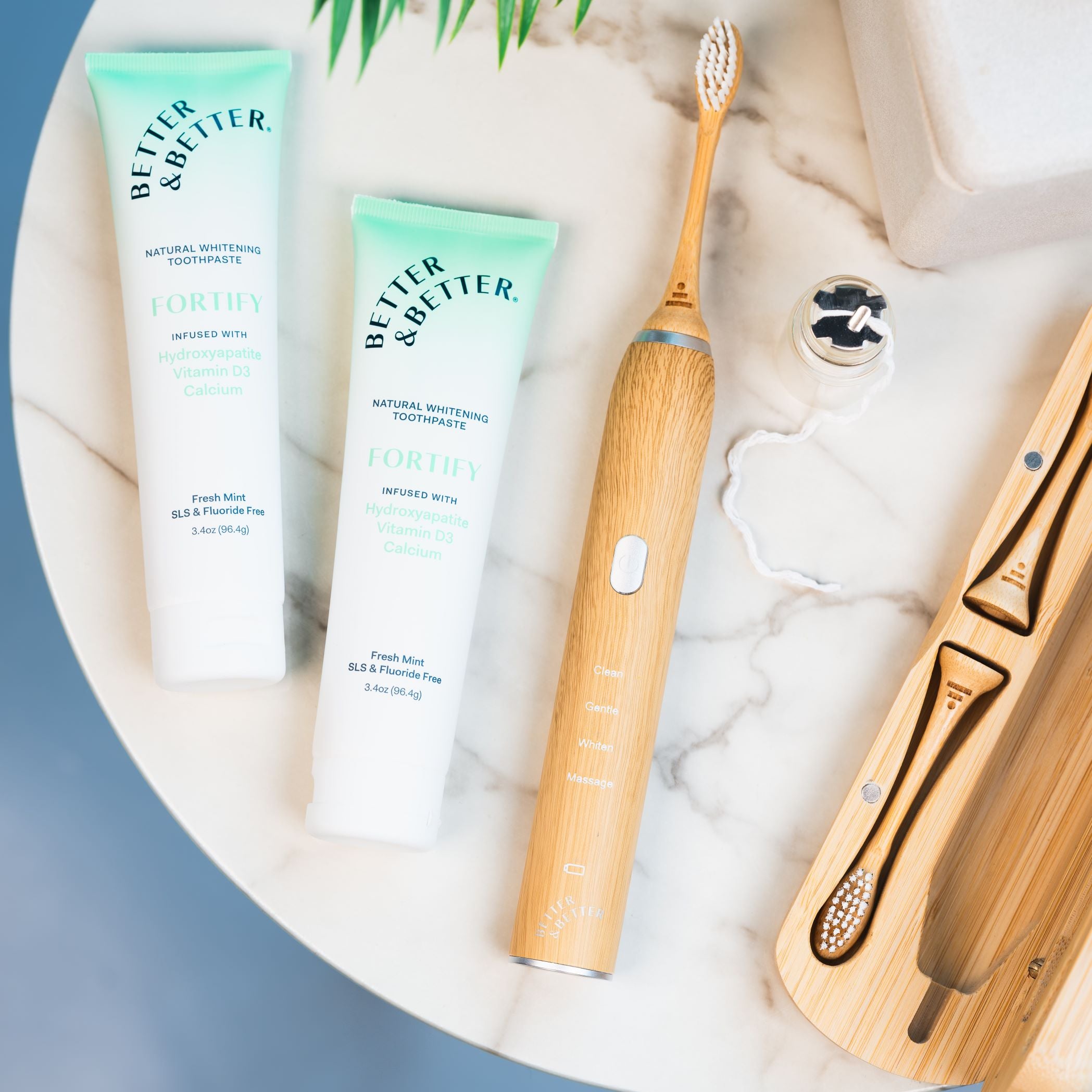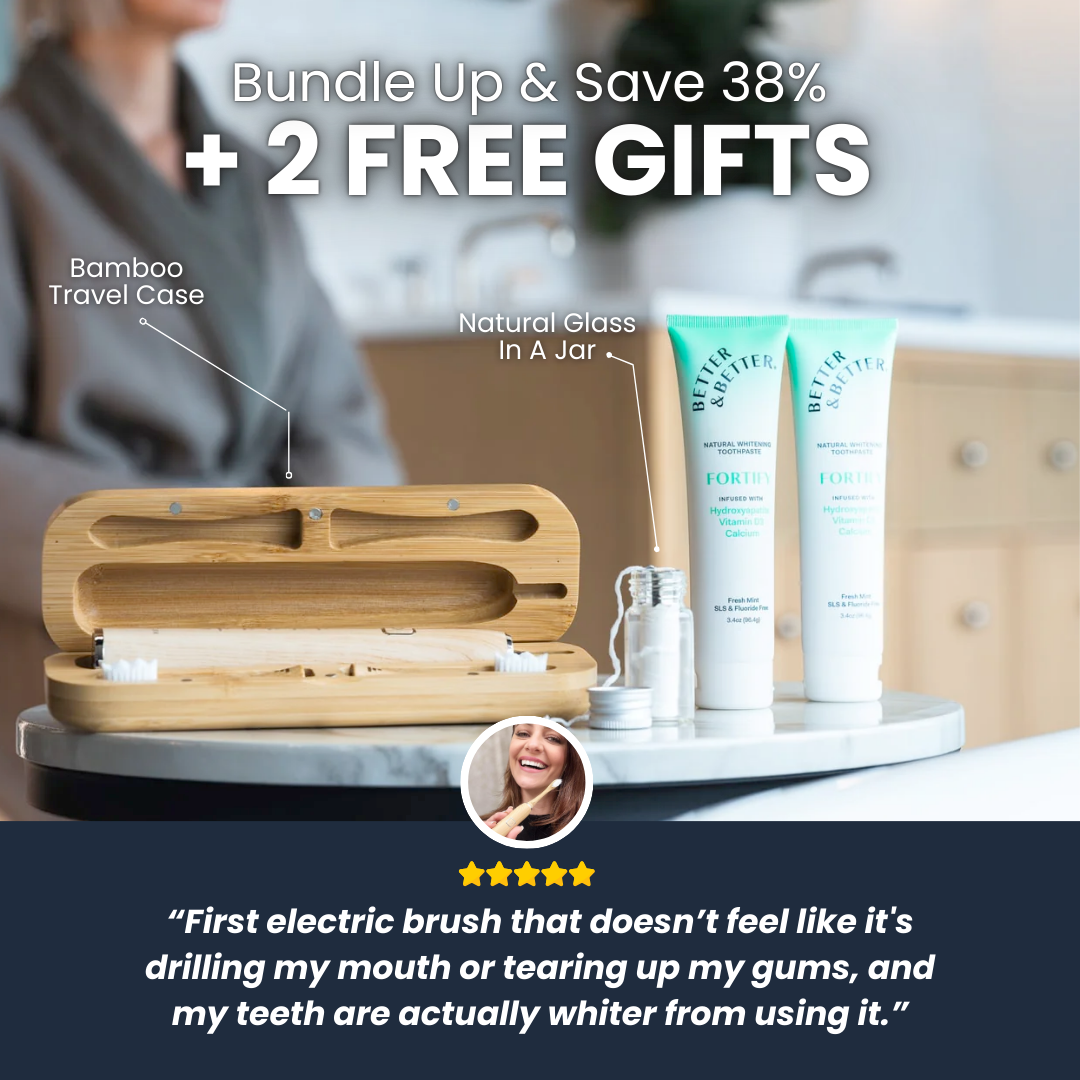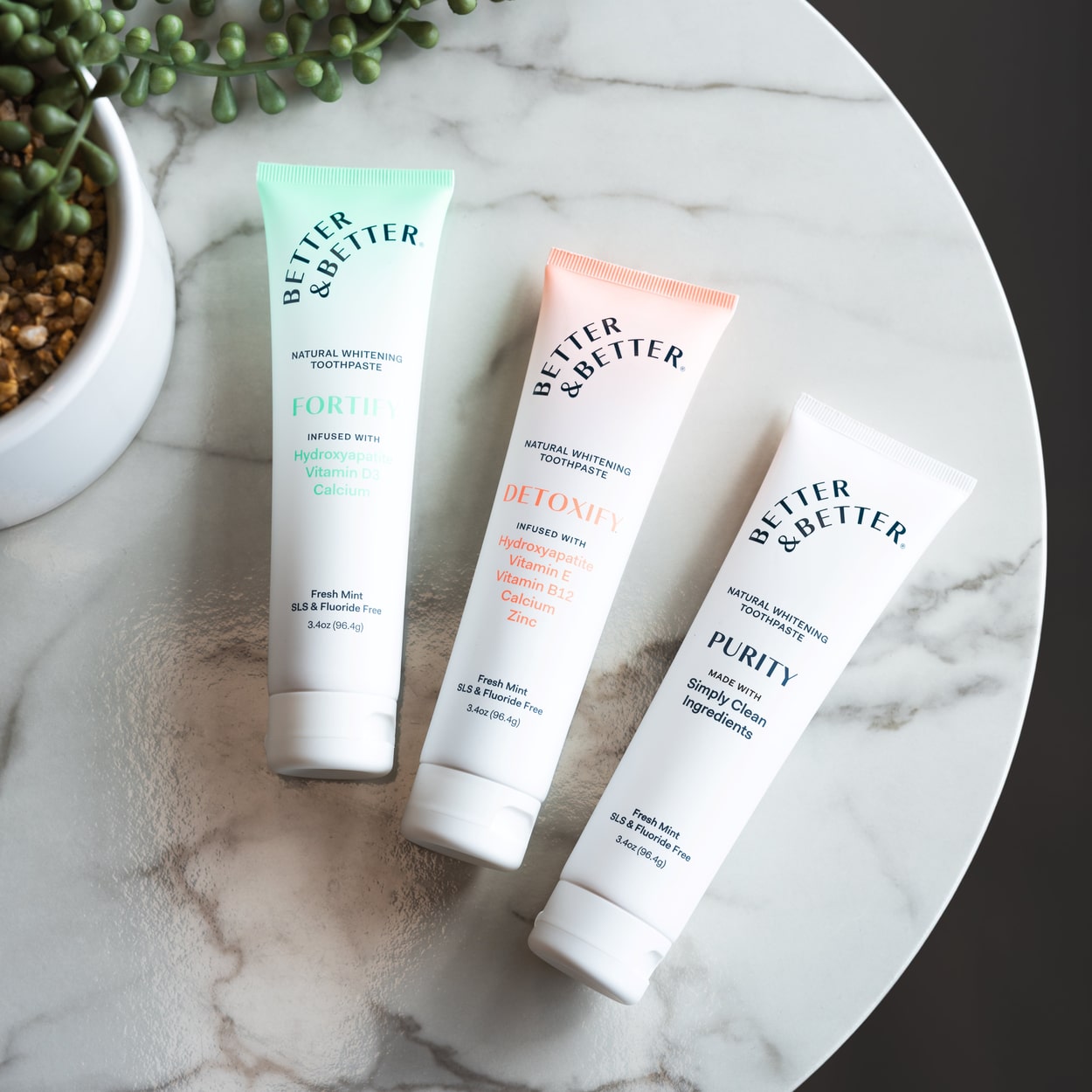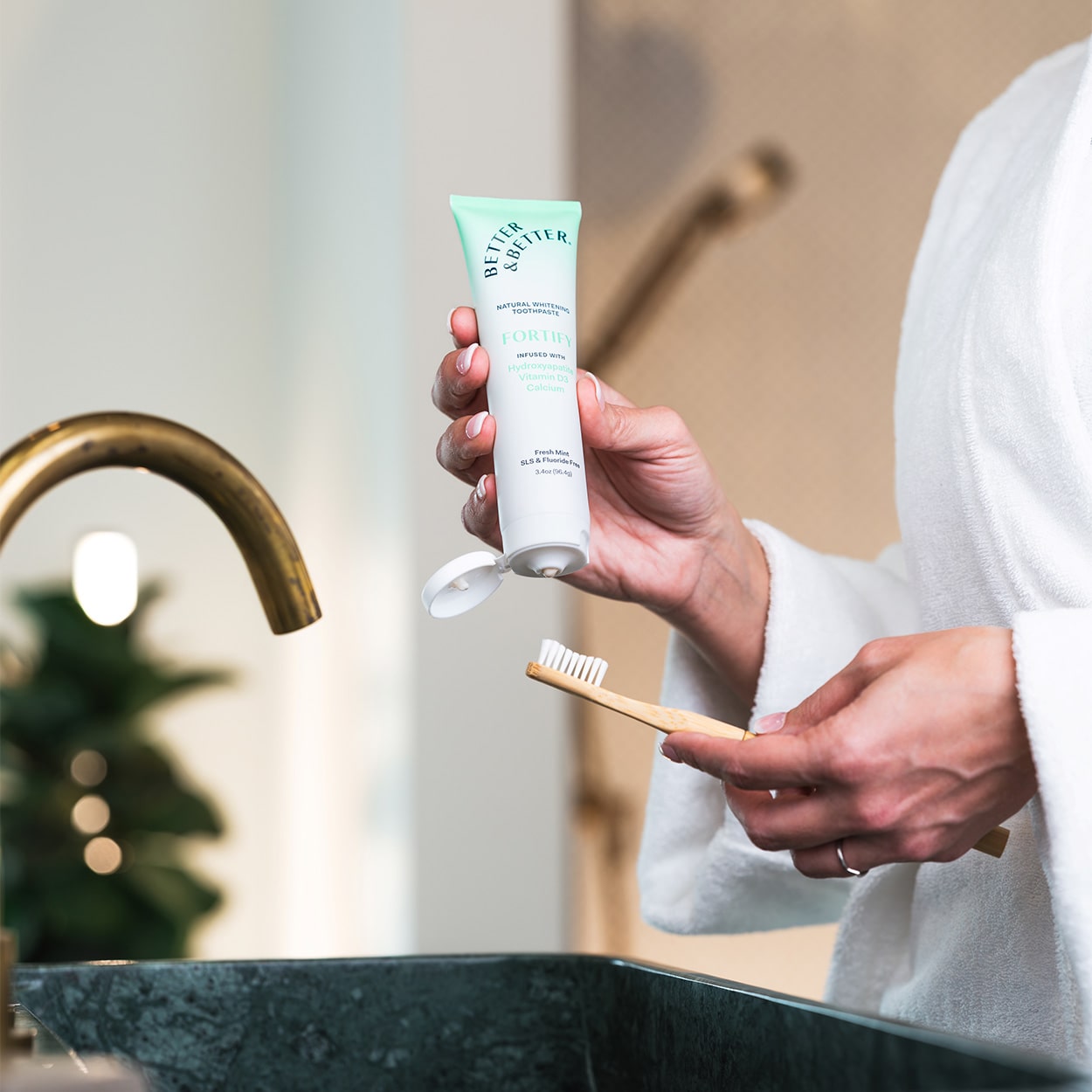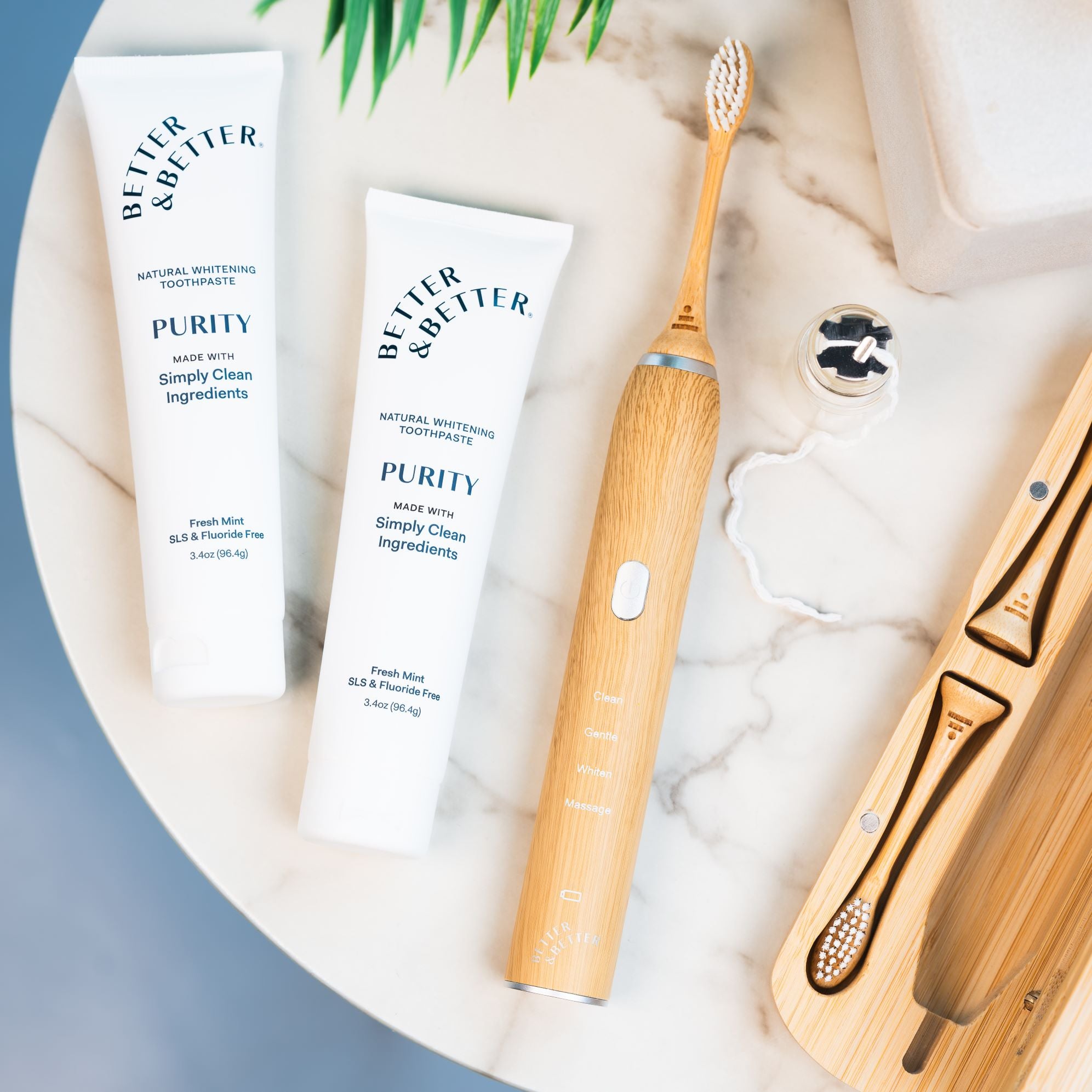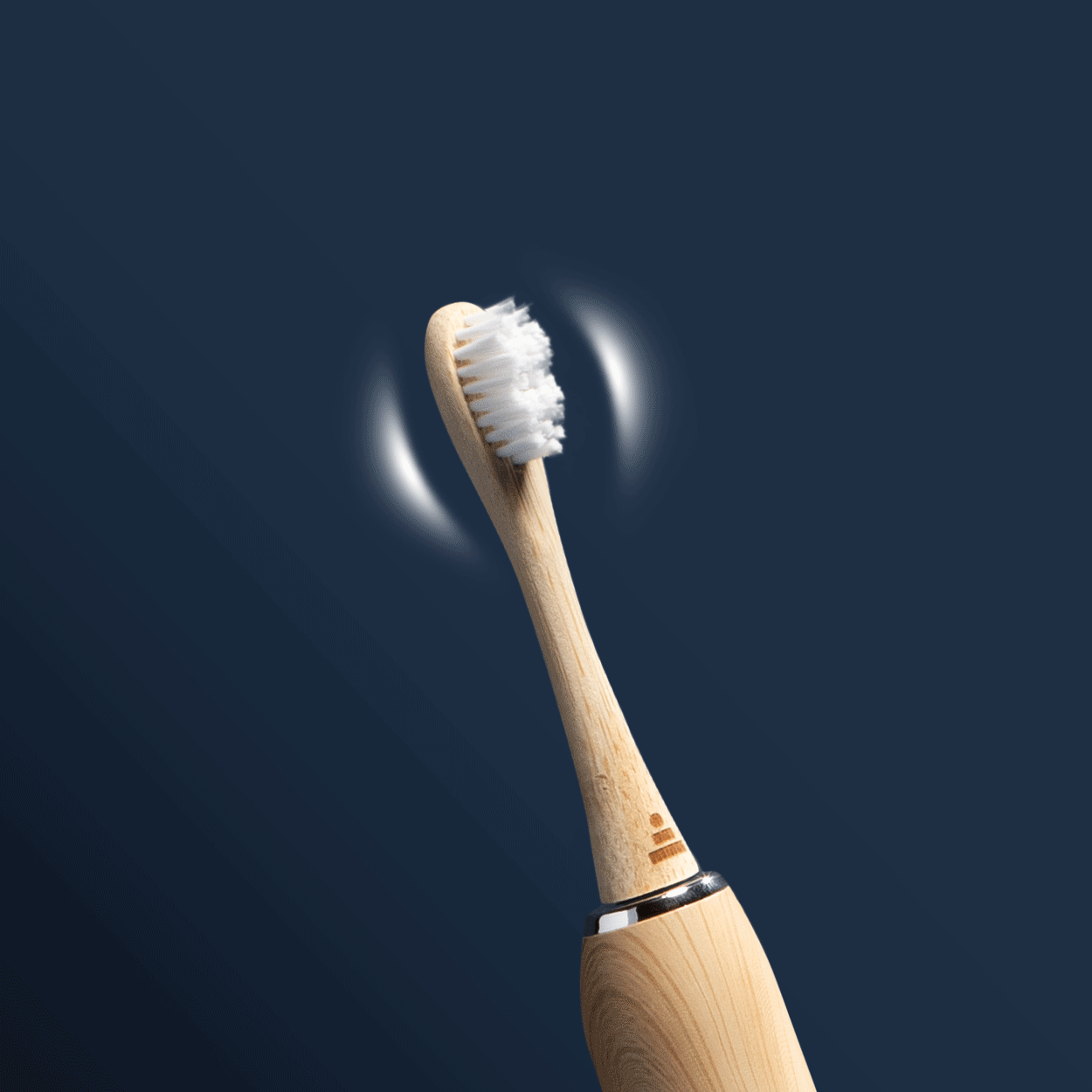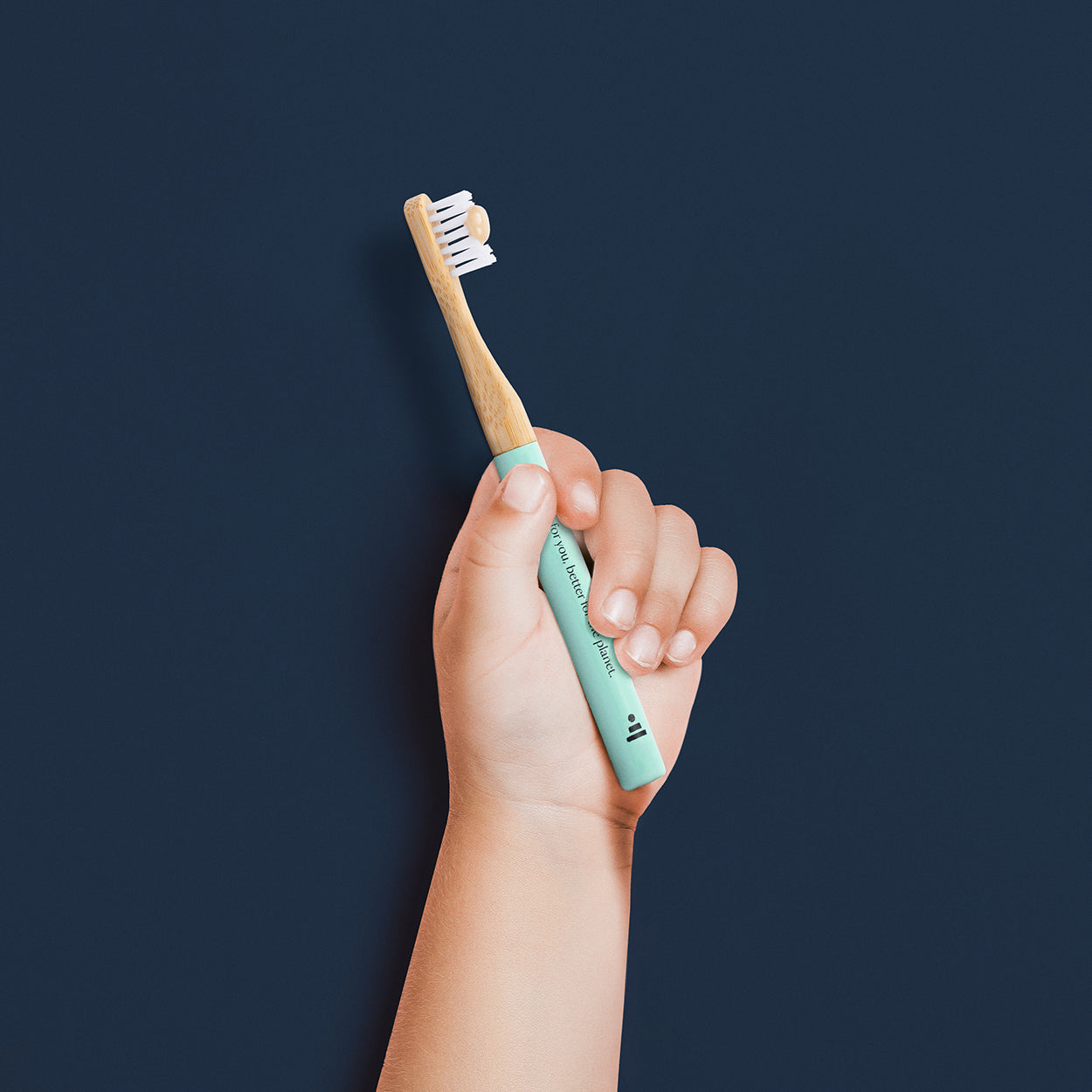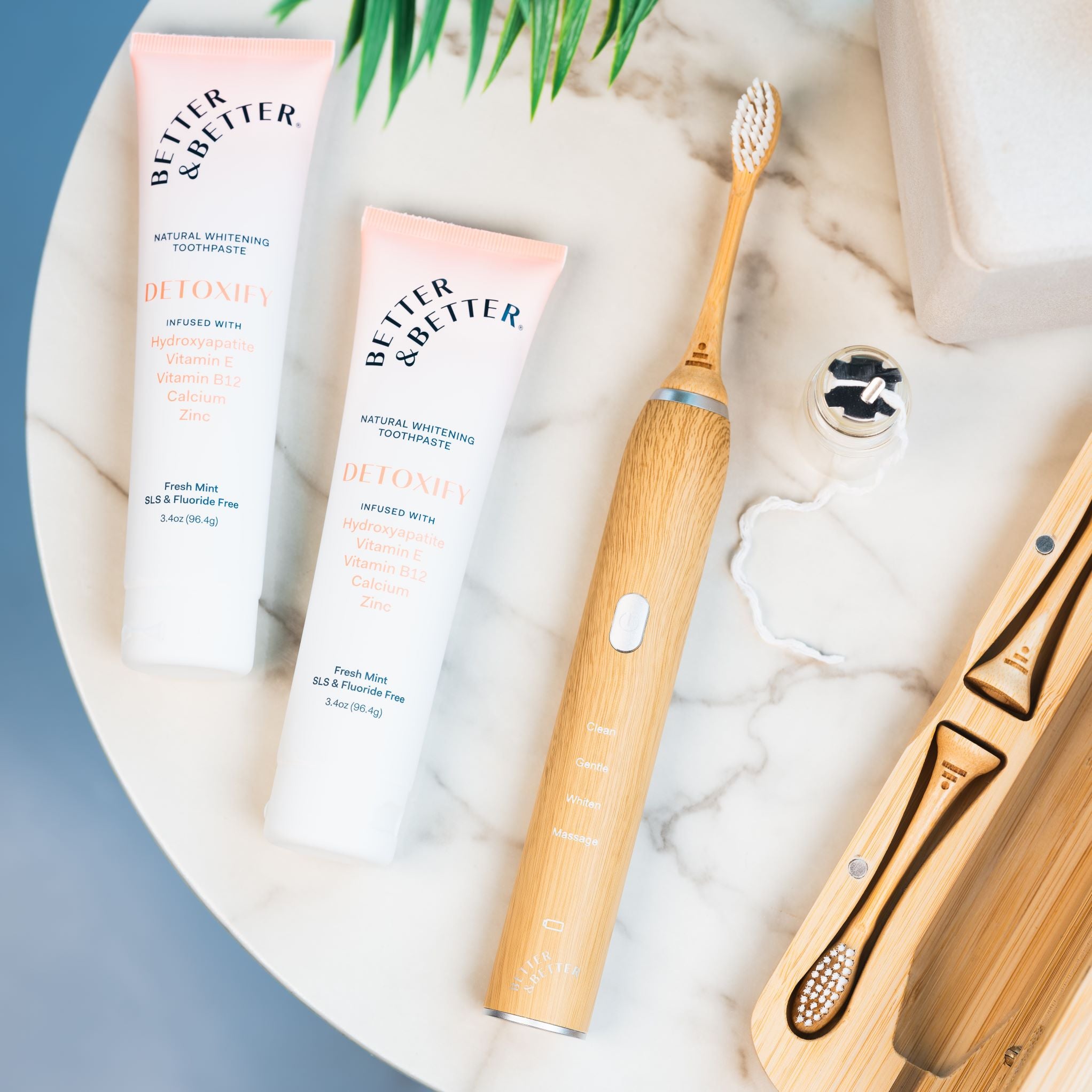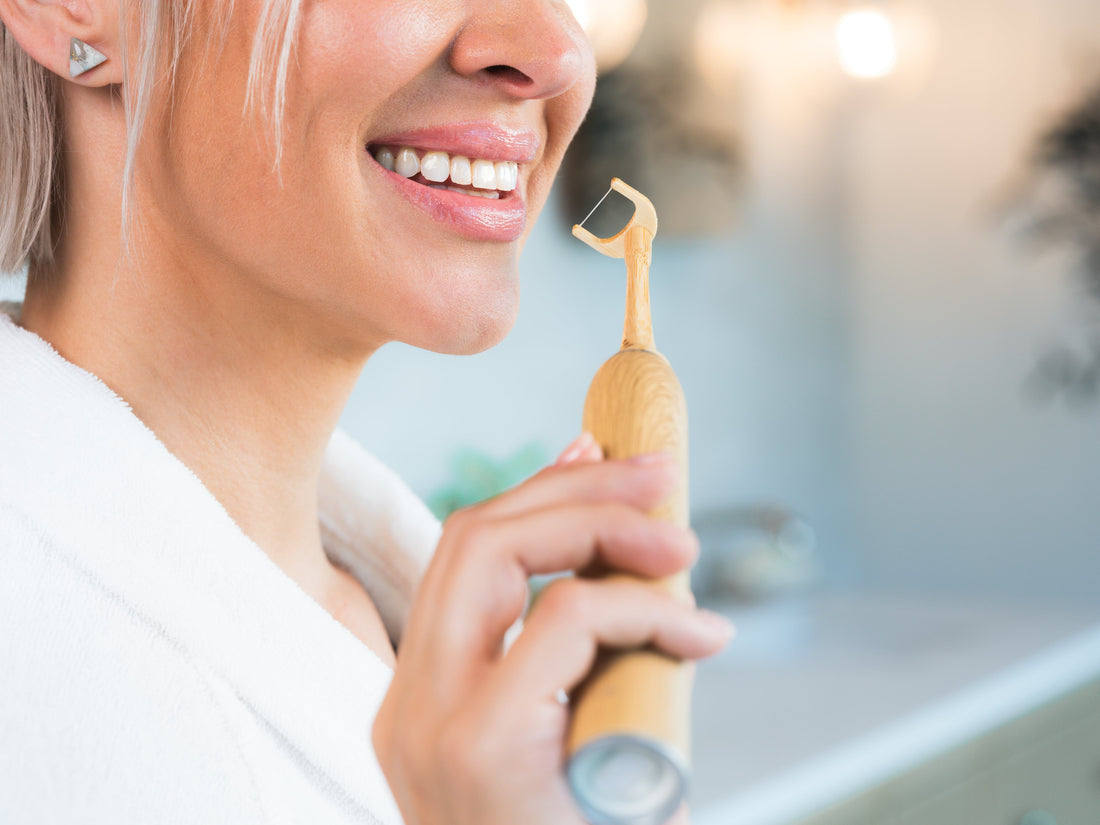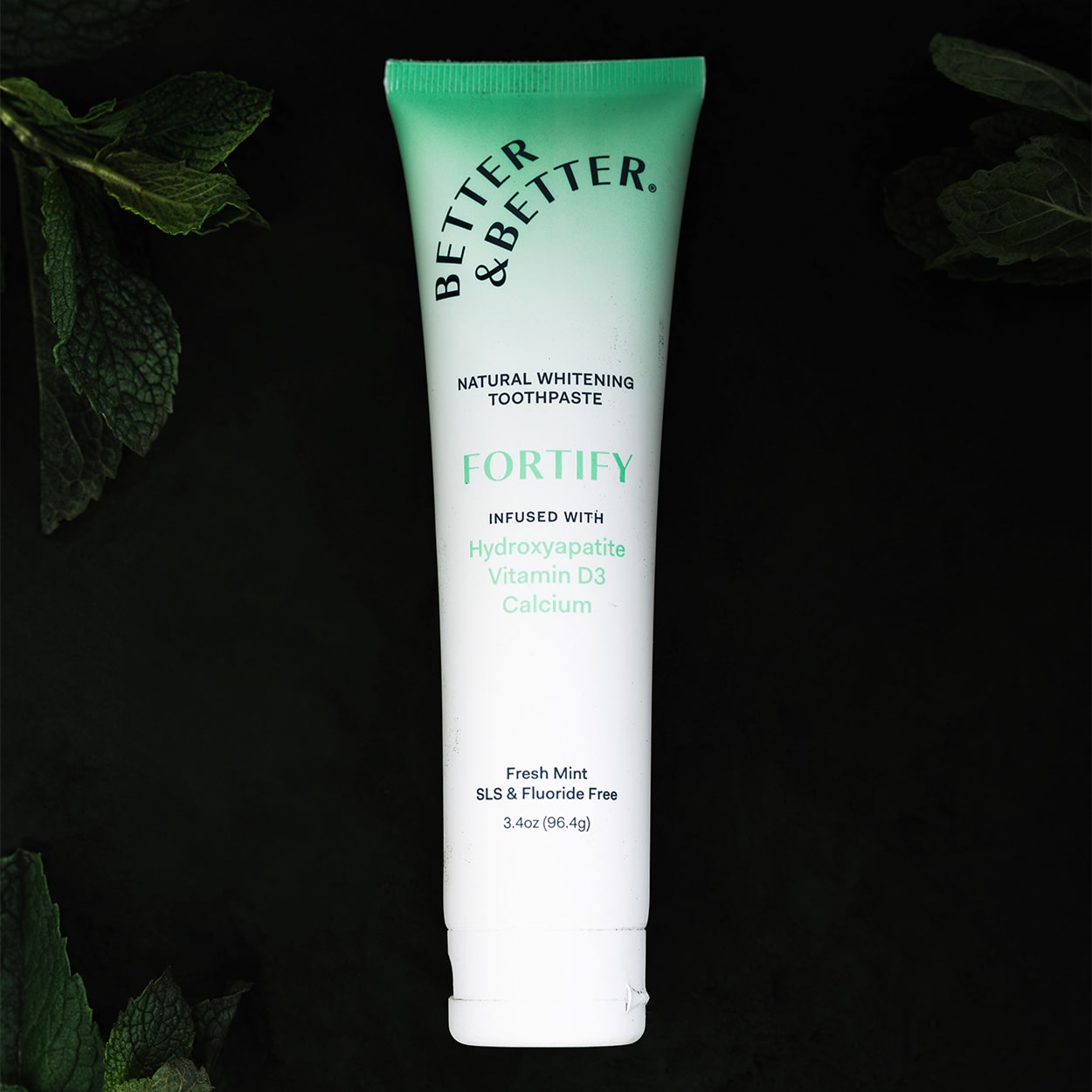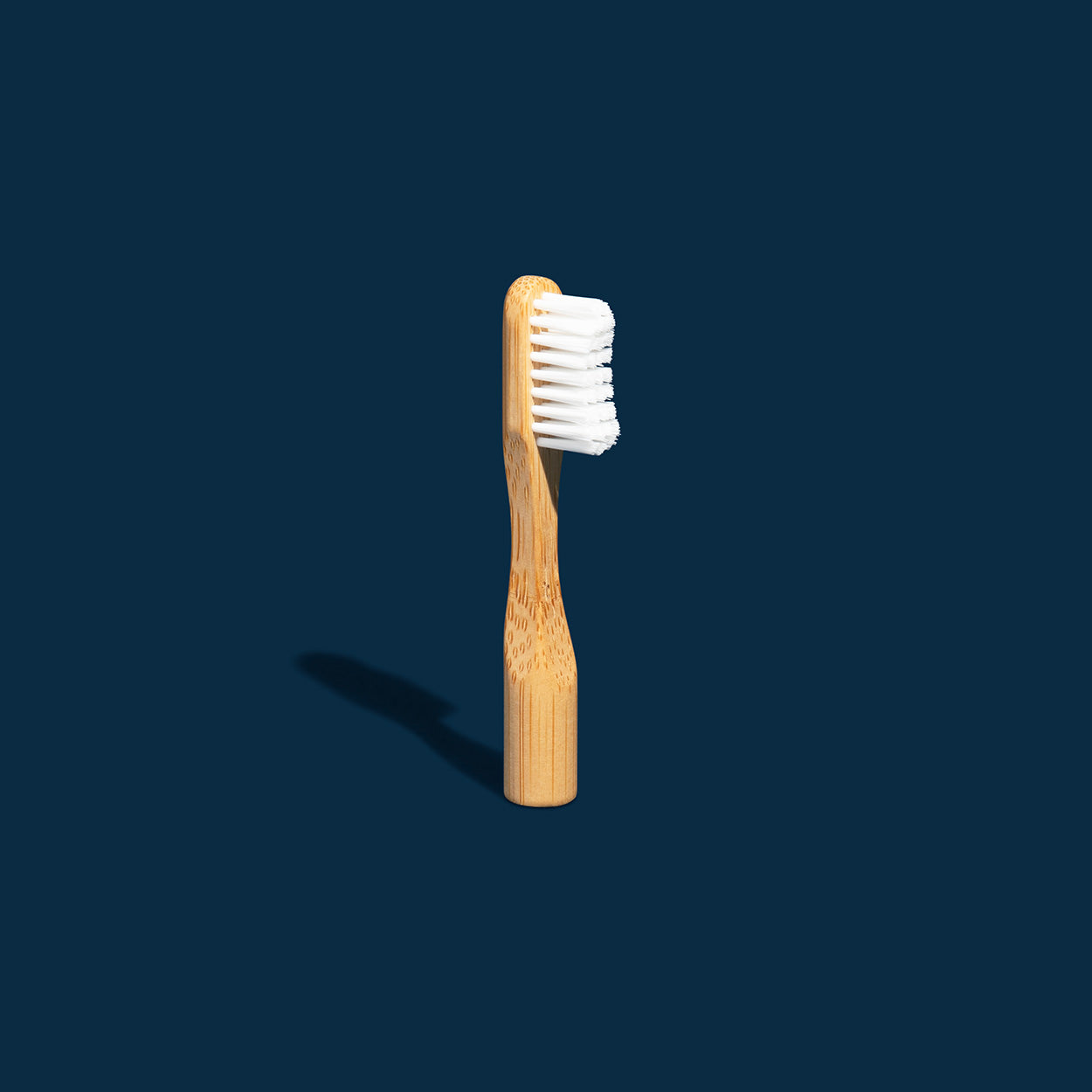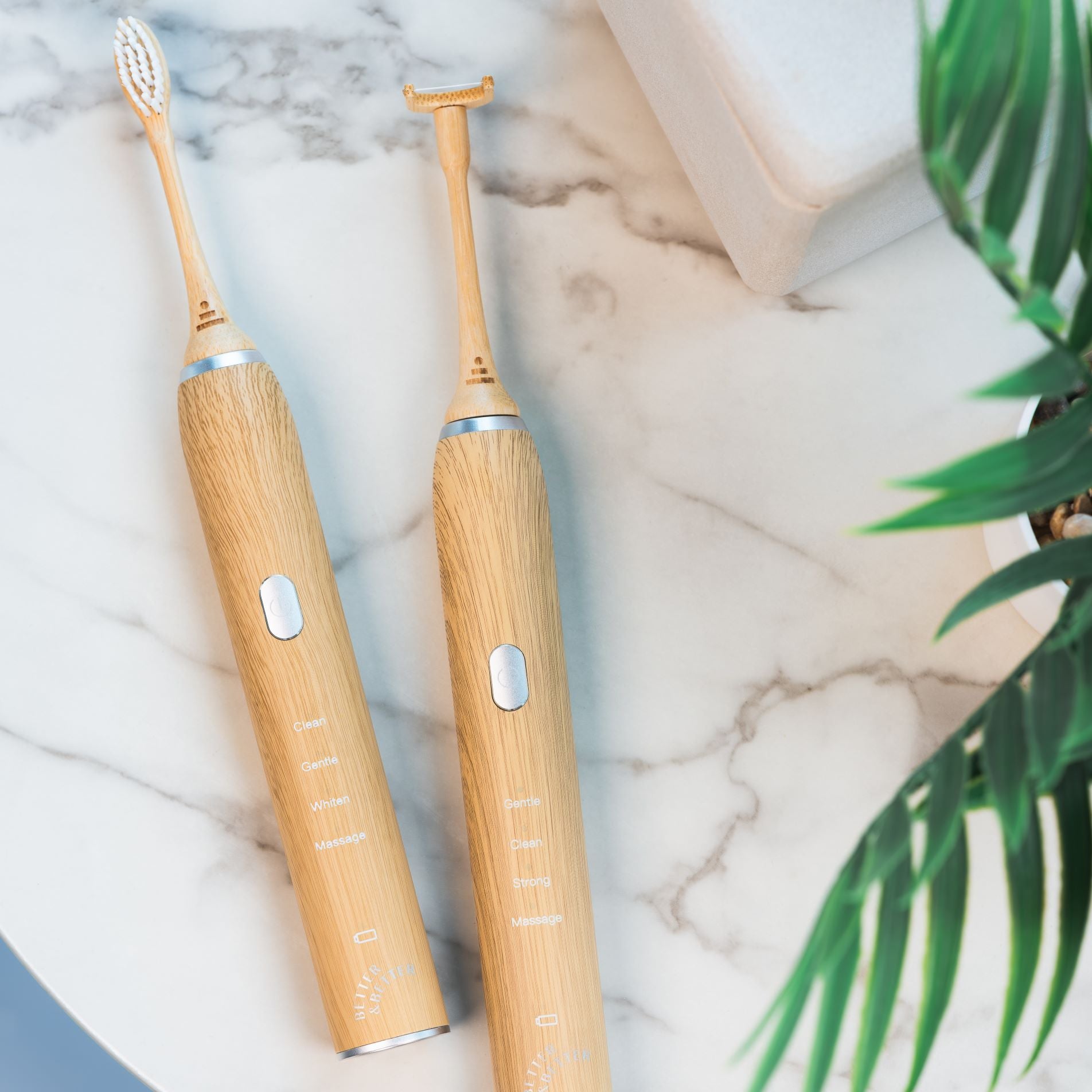Fluoride strengthens enamel by forming a protective barrier, while hydroxyapatite, a naturally occurring mineral in teeth, repairs and rebuilds enamel by replenishing lost calcium and phosphate. Hydroxyapatite is also non-toxic and biocompatible, making it a safer alternative for those looking to avoid fluoride’s potential side effects.
For decades, fluoride has been the darling of oral care. It’s been credited with reducing cavities and strengthening enamel, earning its spot in nearly every toothpaste on supermarket shelves. But if you’ve scrolled through social media lately, you’ll see fluoride has been facing some serious side-eye. Concerns over its effectiveness (and potential toxicity) are sparking conversations about whether it’s truly the best option for your pearly whites.
Enter hydroxyapatite: a naturally occurring mineral that’s making waves as a fluoride alternative. It’s not exactly new—scientists have known about its tooth-loving benefits for decades—but it’s finally getting the attention it deserves.
Curious to see how hydroxyapatite toothpaste stacks up against fluoride? Let’s break it all down, so you can decide which one deserves a spot on your bathroom counter.
Hydroxyapatite vs. Fluoride: Key Differences Explained
Fluoride and hydroxyapatite have the same goal: to protect your teeth from cavities and decay. But they go about it in very different ways. From safety to composition to sensitivity relief, here’s how the two compare:
1. Safety
One of the biggest knocks against fluoride is its potential toxicity. While fluoride is highly effective at preventing cavities, excessive exposure can lead to health issues. In fact, a 2017 report found that fluoride exposure during pregnancy correlated with poorer cognitive function in children later in life. Further, dental fluorosis can leave permanent white streaks on teeth, while skeletal fluorosis can harden bones to the point of fragility.
Hydroxyapatite, on the other hand, is naturally biocompatible—meaning your body recognizes it as a friend, not a foe. Because it’s a major component of your teeth and bones, it integrates seamlessly into your oral health routine without any toxicity concerns.
Bottom line: hydroxyapatite is the safer choice, especially if you’re looking to avoid the risks associated with fluoride.
2. Cavity Prevention
Fluoride has long been celebrated for its cavity-fighting powers, but hydroxyapatite matches it punch for punch. According to a 2019 study published in Nature, hydroxyapatite is equally as effective as fluoride when it comes to preventing and repairing cavities.
Another study published in the Journal of Nanobiotechnology confirmed that hydroxyapatite is a powerhouse for cavity prevention. The kicker? It does so without the side effects linked to fluoride, like fluorosis.
If cavity prevention is your main priority, hydroxyapatite is more than up to the task.
3. Composition
Fluoride works by creating a protective barrier on your teeth. When you brush with fluoride toothpaste, it reacts with saliva to form fluorapatite, a film that shields your enamel from acid and bacteria.
Hydroxyapatite takes a different approach. As a mineral naturally found in your teeth, it replenishes lost calcium and phosphate, effectively rebuilding your enamel from the inside out. This makes it a more holistic option for remineralizing and strengthening teeth.
4. Biocompatibility
Here’s where hydroxyapatite really shines: it’s already part of your body. Your enamel and dentin are made up of 70–80% hydroxyapatite, so your teeth know exactly how to make use of it.
Fluoride, by contrast, isn’t naturally present in your body. While it works effectively when applied topically, it doesn’t integrate with your teeth the way hydroxyapatite does.
5. Tooth Sensitivity
If cold water or hot coffee make you wince, hydroxyapatite might be your new best friend. A 2014 study found that brushing with hydroxyapatite significantly reduced cold air and tactile sensitivity in people with oral hypersensitivity.
Why? Hydroxyapatite strengthens dentin—the softer layer beneath your enamel—making your teeth more resilient to external triggers.
Fluoride can help with sensitivity to a degree, but it doesn’t penetrate your teeth as deeply as hydroxyapatite, which works from the inside out.
Start Brushing Better with Hydroxyapatite
Fluoride may have been the gold standard for oral care since the 1950s, but it’s safe to say we’ve learned a thing or two since then. Hydroxyapatite offers the same cavity-fighting benefits as fluoride, minus the potential risks. It’s biocompatible, strengthens your teeth, and even helps with sensitivity—making it the better choice for modern oral hygiene.
Ready to make the switch? Check out Fortify, which earned a GQ Grooming Award for Best Toothpaste. In addition to being infused with remineralizing hydroxyapatite, Fortify is free from parabens, sulfates, and artificial sweeteners, so you can brush better.
Give your teeth the upgrade they deserve. Try Fortify and see what hydroxyapatite can do for your smile.



